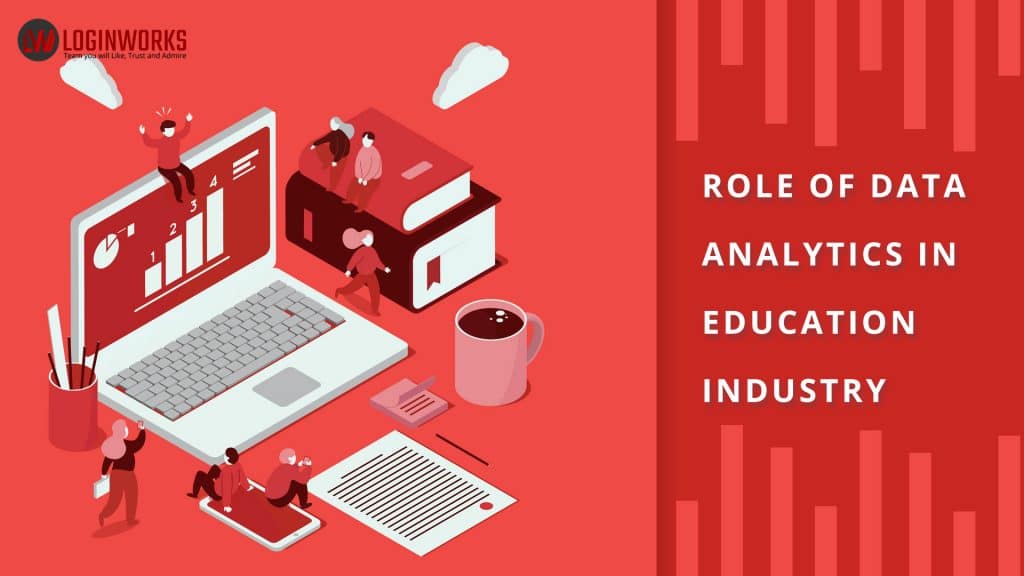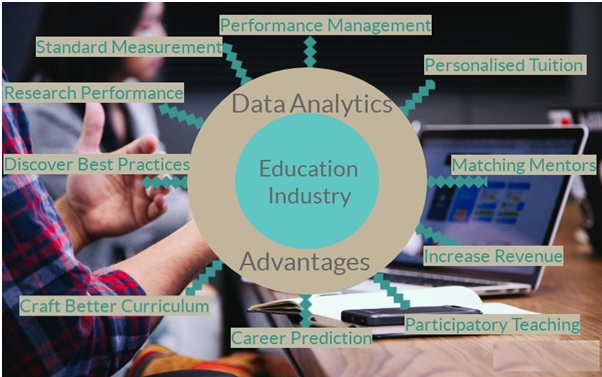Jump to Section
Introduction
Educational institutions collect a lot of data right from the outset. The information schools use from their wealth of information do not go past academic records. In an interview with George Siemens, an education theorist, from the Technology Enhanced Knowledge Research Institute at Athabasca University, he said that “Schools and universities have long tracked a broad range of learner data …” He further said that most schools don’t make use of this wealth of information beyond having a school profile report.
Schools have a wealth of information but according to Sarita Digumarti, a data analytics consultant, she said an increasing number of colleges are in debt. Colleges are spending heavily on improving infrastructure to attract students and retain them. Furthermore, competition among higher education is increasingly fierce as they battle reducing dropout rates in their respective institution.
Educational institutions are now understanding the role Data Analytics is playing in harnessing their plethora of data and putting it into useful information for management decision.
It is important to note that data analytics in education cuts across every age group, from kindergarten to doctoral level. Data analytics is playing a vital role in schools and there are great results. For instance, the University of California saved over $493 million in four years using IBM Smarter Analytics. In a report, Governance Studies at Brooking, 2017, it was revealed that teachers were able to monitor their pupils’ performance and get real-time information on what has been learnt.
With a continuous decrease in profit for educational institutions, ever-increasing costs and competition, schools need to turn to data analytics to increase profit, reduce dropout rates and have a competitive advantage.
It is important to note that data on its own makes no sense, you need a seasoned professional and a team to help you make sense of it. Therefore, as a student looking for what to study, this is a great field to consider. The data industry is growing really fast and opportunities abound.
Ten Roles of Data Analytics in Education Industry
1. Creating Personalised Education
Schools are using data analytics to create tuition systems that suit an individual’s unique need. It is tailored to meet the student’s educational capability and requirement. Fred Corey, vice provost for undergraduate education at Arizona State, said the software analyzes a student’s educational need and places them at the right level such that they do not need to learn what they already know.
Additionally, data analysis can also reveal areas where a student is underachieving and identify the root cause of poor performance. Art Blakemore, vice provost for academic success at Arizona State University said, “It would take half an hour of office hours [for a professor] to discern that it is not the physics that is the problem but the calculus. The system can do it instantaneously.” This can apply to all specialities, for instance, if the root cause of a student’s low grades in engineering vibration is because of a poor background in strength of materials. Data analytic systems can easily detect this and redirect the student to learning the strength of materials. This is difficult for a human to determine especially in a class environment.
Furthermore, a study conducted by Public Agenda, revealed 54% of students drop out because they could not balance work school life. Schools are using data analytics to meet educational need of each student. This can greatly increase student retention and graduation. Mark Becker, president of Georgia State University, said: “We saw fewer students dropping out and improved graduation rates within the next year.”
Data Analytics systems can also detect and match grades. It can compare a student’s score with the requirement of his field. If their grade is not good enough, it can then notify the teacher for intervention. For instance, there is no issue with an engineering major getting a B- in English, however, is this really worrisome for an English major. The system identifies this issue and advises the teacher accordingly.
2. For Measuring Performance Management
The management team of educational institutions can easily measure their actual performance against their mission. Mark Becker took up the position of President of Georgia State University in 2009, his mission was to increase retention rate and graduation across all races and backgrounds. He said that Georgia State University would “become a national model for undergraduate education by demonstrating that students from all backgrounds can achieve academic and career success at high rates”. He achieved this difficult feat using data analytics and in less than 3 years, African Americans, Hispanics and students from poor background were graduating at the same rate. Becker could constantly measure performance and goal and could respond appropriately, thanks to data analytics.
Also, the management can also use data analytics to monitor students’ and teachers’ activities. This includes attendance and use of physical facilities such a library, recreational centres, cafeterias, etc. This can reveal a great deal of information about places students as well as staff spend most of their time. Management can then improve on facilities that are not regularly used. Additionally, management can further investigate the reason behind the highest used facilities.
3. Measure Your Standard With Other Institutions Worldwide
Apart from the management measuring performance against their mission, data analytics can also measure its standing with other educational institution nationwide and worldwide. Antony Monaco, president of Tufts University, uses data analytics to measure the university’s performance against other institutions of learning in the US and in the world. He said “If you start an initiative, you want to see if you have moved a needle,” he further mentioned that “Looking at data allows you to evaluate how you are doing.”
Data analytics give you real information on how well your institution is performing against other Universities.
4. For Evaluating Research Performance
Another advantage data analytics offer is monitoring and giving information on research performance. Data analytics monitors the number of likes and shares of research papers. Scholars questioned that the number of shares does not really affect the quality of the research done. For instance, a well-known professor may publish an article that may not very great but might get so many likes and shares because of his popularity. However, it is still a good measure of research performance because good research would definitely get good shares and likes. Educational institutions such as the University of Bath use research performance in staff evaluation.
5. To Discover Best Practices and Monitor Students
Digital software can track how a student answers every test question. The methods and ways that brilliant students use in responding correctly can be taught to other less performing students. This gives low performing students insight on the best practices to getting higher grades.
Monitoring students across the school by the management can feel intrusive to students. Despite the fact that educational institutions use this information to better serve the students. Scholars might be uncomfortable having their every move and decision watched. In order to combat this issue, school authority makes monitoring across campus voluntary. Ben Daniel, a senior lecturer at the University of Otago, in New Zealand, confirmed that some students do worry about the school infringing on their privacy. He, however, said that most data in analytics is anonymous and participation is voluntary.
Monitoring students across campus can give information on behavioural qualities and the school authority can render better services to the students. Furthermore, monitoring students can also improve security across campus.
6. To Improve and Craft Better Curriculum
Data analytics can help improve the curriculum for students considerably. There is an increase in learning through computerised software programs. These programs collect data on how well the student understands what has been taught. The system further quizzes the student and there’s immediate feedback. The student knows their score right away. Furthermore, the teacher receives feedback on the performance of every single student and can intervene promptly.
Comparing this system with the traditional educational system where the teacher has to take a lot of time to mark each test script. Students do not get immediate feedback and may never get a feedback. It is also very difficult for the teacher to know the extent to which each student understands the topic, what questions were particularly difficult and much more. Data approach offers better curriculum, it uses digital resources that are taught by the very best in their fields and boost students’ understanding. Digital lessons test students, ensure they actually learn and provide feedback to both student and teacher.
7. It’s Used In Making Career Prediction
Subjects that students pass well can be put together by data systems and it can use this information to predict or advise on a possible career path. The quote, popularly credited to Albert Einstein said “Everybody is a genius. But if you judge a fish by its ability to climb a tree, it will live its whole life believing that it is stupid.” Every student cannot end up as a surgeon or engineer. Therefore, it is important to have a system in place that can advise a student on the best career path for them based on their strengths and weaknesses.
Data analytics can give educational institutions deep insights on the performance students. The system can identify if the student only needs to be brought up to speed or if they truly cannot comprehend the subject that they are taught. Data analytics can also help to identify students who have higher chances of succeeding or failing. It tracks their participation in group assignments, how well they interact in group chats and their responses via email. According to the analysts, Leah Macfadyen and Shane Dawson, data analytics correctly predicted 81% of failing students. Failing students can be easily identified and the teacher or school authority can intervene with the right and appropriate action.
8. Boosting Participatory Teaching
In schools where professors, teaching assistants and students work together on topics or projects, data analytics systems can track and know the level of understanding of everyone in the group. It can then tailor learning materials for each member of the team and bring everyone up to speed. It places everyone on a level playing field.
9. Used in Increasing Revenue
The University management can get real-time data on staff, student and general well being of the institution using data analytics. Schools have been able to create personalised tuition for students which in turn increased student retention and therefore increased revenue. According to The World University Ranking, every 1 per cent increase in student retention gives a return of $3 million for the University.
Also, students who graduate become alumni, and, are potential donors to the school. Therefore, Universities are working hard to ensure students graduate. Harvard raised over $1 billion in donations from its alumni in 2016.
Furthermore, data analytics gives information on facilities are highly used and those that are redundant. Facilities that are used frequently can be improved upon to bring in more income.
Management can also allocate resources better. Information received can help improve financial performance. The school authority knows where money is spent and they can easily spot financial loopholes and block them.
10. Matching Students With Mentor
This is similar to matching in mentorship programs in professional fields such as Society for Petroleum Engineers (SPE). SPE matches Young professionals or new graduates with more experienced professionals in the same field. Universities can also achieve this using data analytics to match students with mentors.
We have examined ten roles of data analytics for the education industry. Data analytics gives very deep insights into student grades, staff and student behaviour, improving financial management, increasing student retention and boosting revenue to the institution.
- Business Intelligence Vs Data Analytics: What’s the Difference? - December 10, 2020
- Effective Ways Data Analytics Helps Improve Business Growth - July 28, 2020
- How the Automotive Industry is Benefitting From Web Scraping - July 23, 2020





